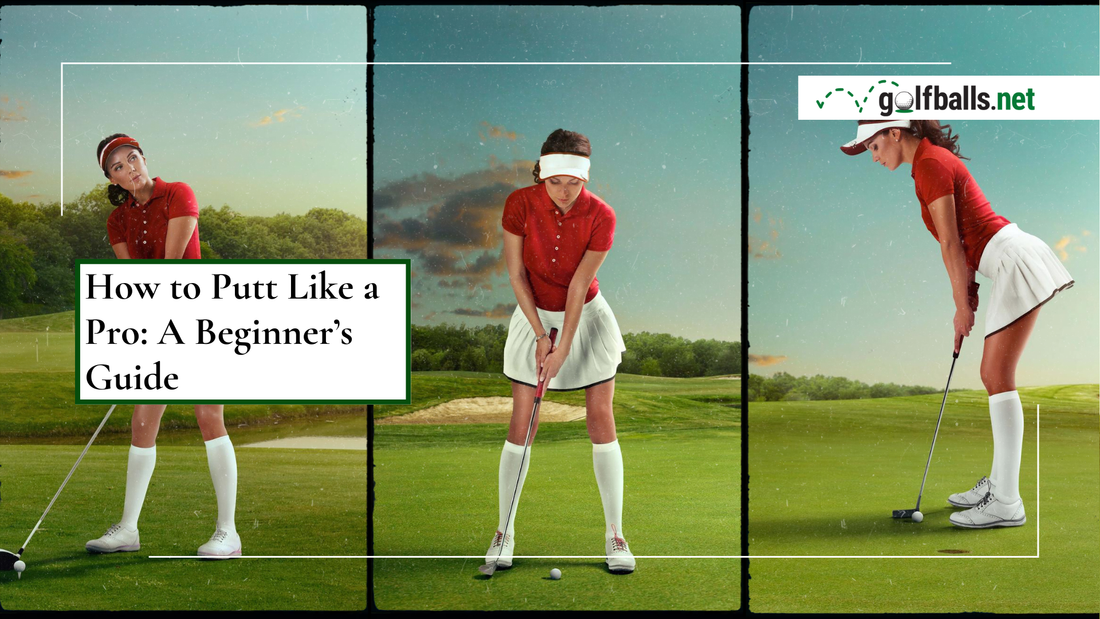
How to Putt Like a Pro: A Beginner’s Guide
Elevate your golf game by perfecting your putting skills. As the true test of patience and precision, putting plays a vital role in elevating your game. A strong putting game can make all the difference, helping you save strokes and turn near-misses into confident finishes. Whether you’re new to golf or looking to refine your skills, this guide will walk you through everything you need to know about putting like a pro.
Understanding the Basics of Putting
Before you start practicing, it's essential to understand what putting is all about. Unlike powerful drives or tricky iron shots, putting requires finesse, precision, and control. The goal is simple: roll the ball into the hole with the fewest strokes possible. However, many beginners struggle because they either rush their stroke, misread the green, or use incorrect technique.
Choosing the Right Putter
Your putter is your most-used club, so choosing the right one is key. There are different types of putters i.e.blade, mallet, and mid-mallet each with its own advantages. The best putter for you depends on your stroke style and what feels most comfortable in your hands. Additionally, your grip, shaft length, and putter weight play a big role in your overall control.
Perfecting Your Grip, Stroke, and Alignment
Grip:
Your grip is the foundation of a smooth, controlled putting stroke. A proper grip keeps your hands steady and prevents unnecessary wrist movement. Popular grip styles include:
• Traditional Grip : Both hands positioned naturally on the putter.
• Cross-Handed Grip : The lead hand is placed lower on the grip for better control.
• Claw Grip : Fingers rest on the shaft for a more stable stroke.
Experiment with different grips and look for golf glove to find what feels most comfortable and provides the best control.
Stroke:
A fluid putting stroke is key to making crucial putts. Focus on proper mechanics by engaging your shoulders while keeping wrist movement to a minimum. This helps create a steady, pendulum-like motion, leading to more consistent and accurate results on the greens.
Alignment:
Proper alignment ensures that your putt starts on the correct line. Position your feet, hips, and shoulders parallel to your target line. A common mistake beginners make is aiming slightly off, which can cause missed putts even with a great stroke. Using alignment aids or drawing a line on your golf ball can help with accuracy.
Reading the Green Like a Pro
A crucial part of putting is learning to read the green. Look for subtle slopes, breaks, and the direction of the grass (also called the grain). A downhill putt will be faster, while an uphill putt requires more power. Walk around the hole, observe the terrain, and visualize your putting line before taking your shot.
Common Putting Drills for Improvement
Want to improve your putting? Practice is key. Try these drills:
• Gate Drill : Place two tees slightly wider than your putter head and practice stroking through them without touching them.
• Clock Drill : Arrange multiple balls around the hole like a clock face and practice putting from different angles.
• One-Handed Drill : Put using only your dominant hand to improve control and feel.
Mental Strategies for Confident Putting
Putting is as much a mental game as it is a physical one. Confidence is crucial—doubt can lead to hesitation and missed putts. Develop a consistent pre-shot routine, take a deep breath, and focus entirely on your target. Visualizing your ball rolling into the hole before you stroke it can also boost confidence.
Conclusion
Mastering putting takes patience and practice, but with the right grip, stroke, and alignment, you can improve significantly. Focus on consistency, read the greens carefully, and practice regularly to refine your skills. And if you're looking for top-quality putters and accessories, check out golfballs.net your go-to destination for all your golfing needs.

